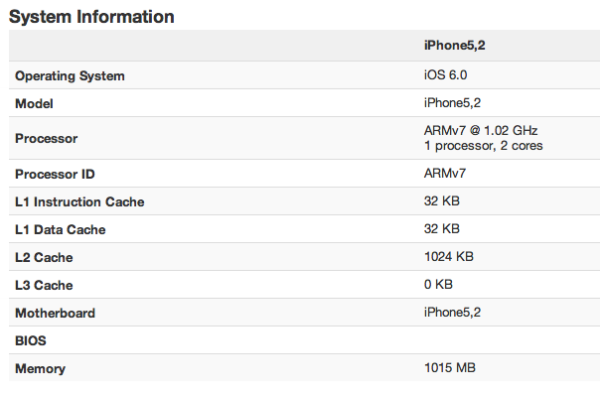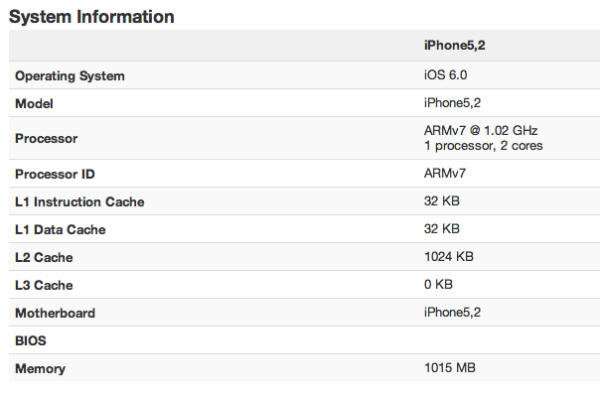While working on our Haswell piece, I've been religiously checking the Geekbench and GLBenchmark results browsers to see if anyone ran either benchmark and decided to tap upload. This usually happens before every major smartphone launch, but in the case of the iPhone 5 the details these applications can give us are even more important.
Yesterday we confirmed that Apple is using its own custom designed ARM based CPU cores in its A6 SoC. Apple opted not to design in a vanilla ARM Cortex A9 likely to avoid relying on pure voltage/frequency scaling to improve performance, and chose not to integrate a Cortex A15 likely because of power consumption concerns as well.
There's absolutely no chance of Apple sending us a nice block diagram of the A6 CPU cores, so we have to work with what clues we can get elsewhere. Geekbench is particularly useful because it reports clock speed. Why does clock speed matter? Because, if reported accurately, it can tell us a lot about how the A6's CPU design has improved from an IPC standpoint. Remember that clock speed doesn't matter, but rather the combination of clock frequency and instructions executed per clock that define single threaded performance.

A short while ago, Geekbench results for a device identifying itself as an iPhone5,2 appeared. Brian believes this is likely the A1429 Verizon device (A1428 being iPhone 5,1) – perhaps one presampled to a reviewer looking to test their luck.
MacRumors appears to be first on the scene, having been tipped by an employee at PrimateLabs (the creators of Geekbench). I need to preface the rest of this post with a giant caution sign: I have no inside knowledge of whether or not these results are legitimate.



